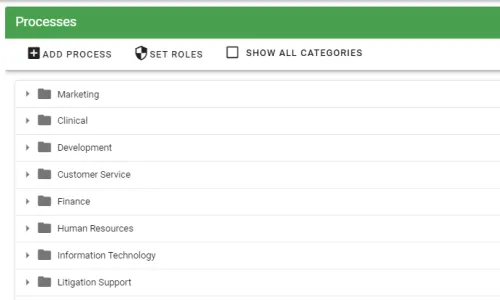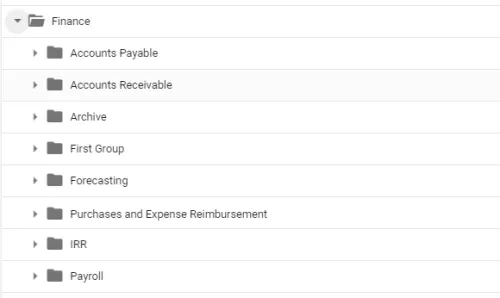What Is the Best Way to Organize an Organization’s Processes?
Table of contents

A company is the sum of its processes. Keeping those processes well-organized and documented makes everything easier.
A well-structured organization enables your company to run smoother and be more efficient overall. To put it simply – it makes everything easier. Organizing processes takes time and effort; everyone must know how the structure works. This way, no matter the department, your employees will know where to find what they are looking for.
Before we get down to it, let's break down what a process is. By definition, a process is "a series of actions or steps taken in order to achieve a particular end." Let's cover how to go about organizing these actions involved.
How to Begin Standardizing Your Processes:
- Map out your processes: Start by identifying and documenting all the processes within your organization. This will give you a clear overview of how things currently work and help you identify areas for improvement.
- Streamline and standardize: Look for ways to streamline your processes by eliminating unnecessary steps, reducing duplication, and optimizing workflows. Standardize processes where possible to ensure consistency and efficiency across the organization.
- Implement automation: Explore opportunities to automate repetitive tasks and manual processes. Automation can save time, reduce errors, and free up resources for more valuable activities.
- Establish clear roles and responsibilities: Clearly define the roles and responsibilities of individuals involved in each process. This ensures accountability, reduces confusion and improves overall efficiency.
- Regularly review and adapt: Processes should not be set in stone. Review and evaluate your processes to identify areas for further optimization or adjustment based on changing needs and circumstances.
A Few Technical Ideas to Consider:
Clear Folder Structure
When organizing your processes, be sure to have a folder structure that makes the most sense for your organization, whether by department, branch location, or any other means that would be easily found for your team.

Use Subfolders
Along with your main folders, it's also helpful to set up subfolders. Let's use Finance processes as an example. Say you are building the folder for your finance team to put their workflow processes in. Set up subfolders for different parts of the finance team to take it one step further and be even more organized. Have subfolders for Accounts Payable, Accounts Receivable, Payroll, etc. This way, if you are looking for something particular, you will know where to find it.

Standardized Naming Conventions
Lastly, develop some naming conventions that can be used organization-wide. This way, when searching your database, finding what you are looking for will be easier, for example, [department]-[process]-[organization]-[year]. You can decide what would work best in your organization, but it's a helpful idea.
Continuously evaluate and adjust your approach to keep things running smoothly and efficiently. It's crucial to stay adaptable and ensure ongoing growth in your processes. Organizing your operations can be manageable if you know how to go into it properly. If you'd like more information on how workflow automation can help your organization be more organized and efficient, contact us for a demo!







